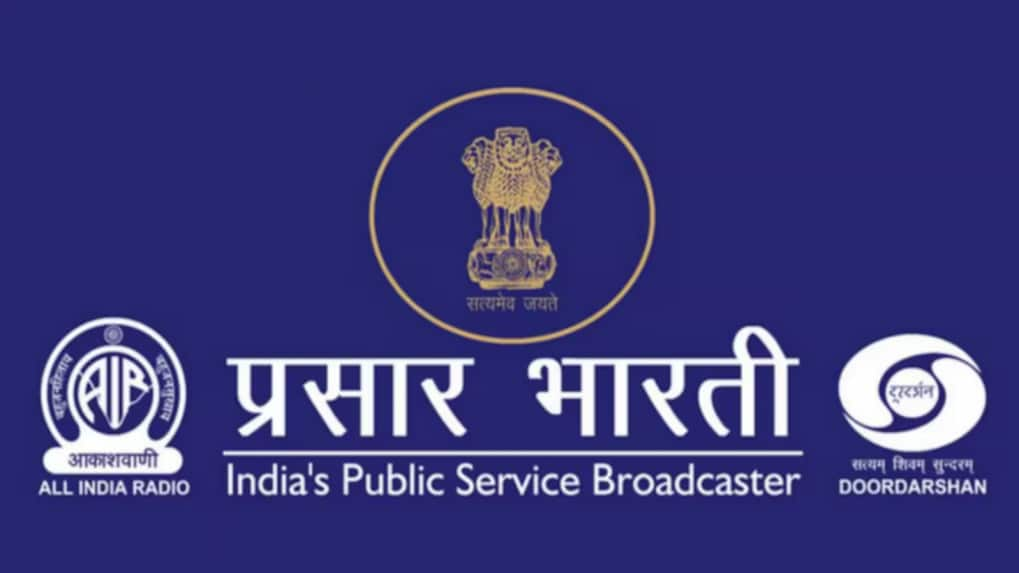Prasar Bharati faces 30,000 vacancies; EY recommends filling 3,130 posts by 2026
Parliamentary Standing Committee urges urgent recruitment as EY proposes leaner structure, outsourcing, and new digital roles for India’s public broadcaster.
ADVERTISEMENT
Prasar Bharati, India’s public service broadcaster, is grappling with a massive human resource crisis with nearly 30,221 vacancies out of its sanctioned strength of 45,791.
The Parliamentary Standing Committee on Communications and Information Technology, in its latest report, has raised concerns that the “perennial” shortage of permanent employees is forcing the broadcaster to rely heavily on contractual staff under its 2021 Contractual Engagement Policy (CEP).
Read more: Prasar Bharati invites applications for key board positions in Finance and Personnel
According to the Committee, All India Radio (AIR) alone has 16,251 vacancies, while Doordarshan is short of 13,970 staff. To manage day-to-day operations, including the running of its newly launched OTT platform, the broadcaster has been engaging temporary staff and asking existing employees to shoulder multiple roles across programming, policy, sales, marketing, legal and administrative functions.
The Committee expressed dissatisfaction over delays in implementing the human resource transformation (HR) exercise despite the completion of a manpower audit. It noted that depending on stop-gap measures to sustain efficiency is “not a plausible solution” in a media environment undergoing rapid digital disruption. It recommended the Ministry of Information and Broadcasting to prioritise filling vacancies with a dedicated workforce trained in both traditional broadcasting and emerging digital platforms.
"The Committee note that the situation of vacancies in Prasar Bharati has become perennial which is undesirable given the fact that in order to sustain efficiency, skill requirement is being met with stop gap arrangement which is not a plausible solution to the problem," it saod.
Government’s response: Leaner workforce, new skills
Responding to the Committee, the Ministry of Information and Broadcasting said it had engaged consultancy firm Ernst & Young (EY) for HR transformation. EY’s Phase-I report recommended reducing Prasar Bharati’s workforce to 14,902 posts- far below the current sanctioned strength - subject to the implementation of several “levers.”
These include outsourcing non-core functions such as cleaning, security, and maintenance of transmitters; scaling down or closing unpopular services and obsolete modes of broadcasting; shutting 31 All India Radio channels and 78 transmitters; and accelerating automation and digitisation across operations.
Read more: Ministry of I&B gets ₹4,358 cr in FY26; ₹500 cr earmarked for BIND
During the transition period, EY has suggested that about 8,000 additional staff may be required temporarily to ensure smooth functioning until restructuring is completed. The report also recorded requests from divisional heads for 18-20% additional manpower above EY’s estimate, which would add about 2,784 posts.
Recruitment plan: 3,130 posts by 2026
Acknowledging the acute gaps in critical functions, EY has drawn up a recruitment plan for 3,130 posts to be filled in phases between April 2025 and December 2026. Of these, programme-specific roles account for the bulk of recruitment, with 1,149 posts to be filled in the short term (April–December 2025). Administrative roles will add another 348 positions over the three phases, while just 16 engineering posts are planned across the period.
The recruitment is to be spread over short-term (0–8 months), medium-term (9–12 months), and long-term (12+ months) timelines. Posts remaining vacant after December 2026 are to be filled on an ongoing basis, subject to manpower needs and retirements.
New roles for the digital age
The HR transformation exercise is also expected to reorient Prasar Bharati’s workforce for the digital era. EY has recommended creating new roles in areas such as digital media and platforms, OTT management, corporate planning, content strategy, cross-platform content leverage, compliance, and sales and marketing. These roles will require re-skilling, redeployment of existing employees, and fresh hiring for specialised skills.
Phase-II of the HR transformation, which focuses on capacity building, training, and change management, is yet to begin. It is expected to take six months once Phase-I is formally completed and approved by the Prasar Bharati Board, the Ministry of I&B, and the Department of Expenditure.
Committee’s call for urgency
The Standing Committee has cautioned that prolonged delays in filling vacancies could compromise the broadcaster’s ability to meet its mandate as a public service broadcaster in a rapidly evolving media landscape. It has asked the Ministry to share a clear timeline for completing the HR transformation and filling posts.
The government, in its reply, said the restructuring exercise, though time-consuming due to the need for multiple approvals, would ultimately make Prasar Bharati “stronger, more agile, and better positioned” to serve audiences across traditional and digital media.
Read more: DoT capital spending surges to Rs 82,646 crore in FY25; revenue projections cut for FY26
For now, however, with two-thirds of its posts lying vacant and heavy dependence on contractual staff, India’s largest broadcaster remains in the middle of an uncertain transition- balancing between plugging gaps and preparing for a leaner, digitally savvy future.

